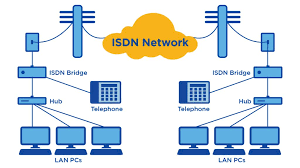ISDN
The abbreviation "ISDN" stands for "Integrated Services Digital Network," which translated into Slovak means "Integrated Digital Network Service." ISDN is an older telecommunications technology that was used in the past to transmit voice, data and other services digitally over telephone lines.

Here are some key characteristics of ISDN:
Digital technology: ISDN was one of the first telecommunications technologies to use digital technology for data transmission. This means that the voice signal has been converted into a digital format, which has enabled better voice and data transmission.
Integrated services: The main idea of ISDN was to provide integrated services, which means that voice, data and other services with different transmission rates could be transmitted over a single ISDN connection.
Channels B and D: The ISDN connection was divided into two main types of channels: Channel B (Bearer Channel) for voice or data transmission and Channel D (Data Channel) for control and signaling. Channel B was widely used for telephony or data transmission, while Channel D handled connectivity and signaling.
Transmission rates: ISDN offered various data transmission rates, the most common being ISDN Basic Rate Interface (BRI) with 64 Kbps for Channel B and 16 Kbps for Channel D, and ISDN Primary Rate Interface (PRI) with higher rates.
Replaced by modern technologies: Today, ISDN technology has largely been replaced by modern broadband technologies such as fiber optic, DSL (Digital Subscriber Line), cable and wireless networks. These newer technologies offer higher data transfer speeds and greater flexibility.
ISDN was an important technology in the past, but with the advent of modern solutions, its use gradually decreased. Currently, ISDN connections are no longer provided in many regions, as they have been replaced by faster and more efficient telecommunications technologies.
